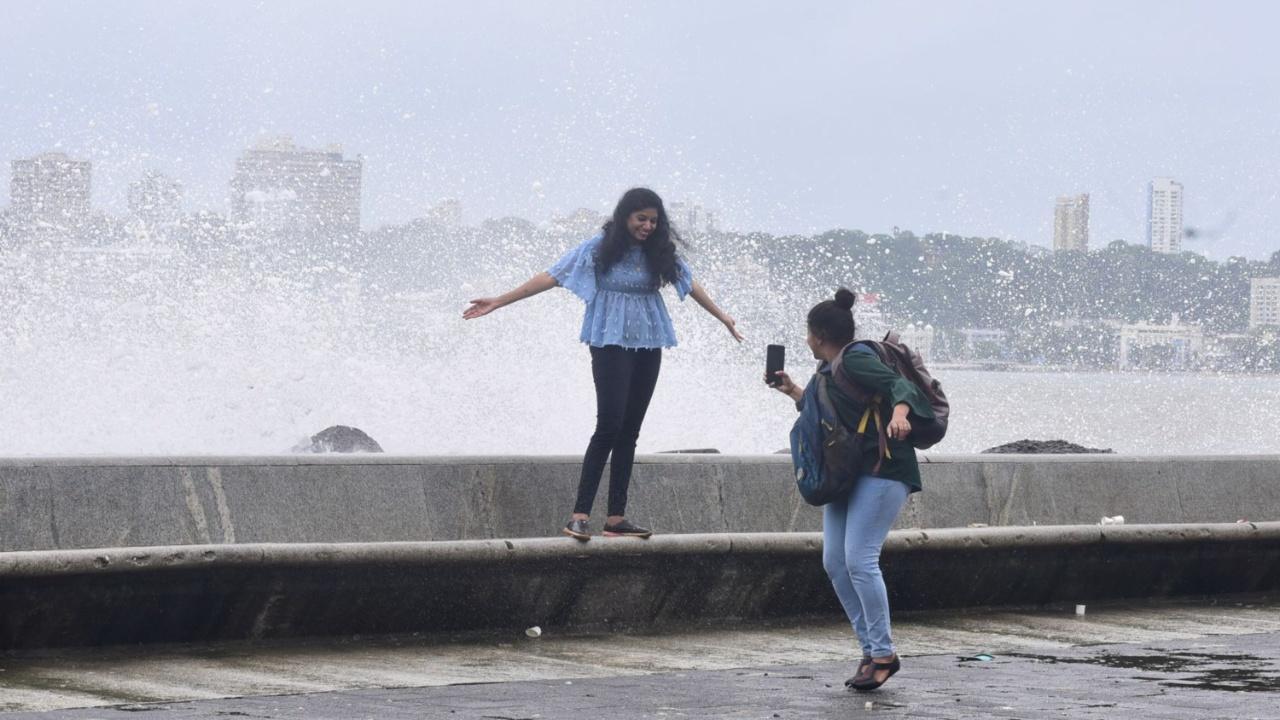Infection
Monsoon basics: Essential tips to keep your kids protected from infections and illnesses
Stagnant water becomes a breeding ground for disease-carrying mosquitoes, leading to a surge in vector-borne diseases like dengue, malaria, and chikungunya. Expert shares essential tips to stay safe during monsoon
Keep your kids protected from monsoon-related illnesses with these essential tips
Monsoon basics: Essential tips to keep your kids protected from infections and illnesses
x
With the monsoon season peaking in Mumbai, the incidence of illnesses and infections are rising. Every second person is down with flu or is sneezing boisterously. Several factors contribute to this rise in health risks. The most significant factor is the increase in humidity and moisture during the monsoon, which creates an ideal environment for the growth of bacteria, viruses, and fungi.
Stagnant water becomes a breeding ground for disease-carrying mosquitoes, leading to a surge in vector-borne diseases like dengue, malaria, and chikungunya. Additionally, the contamination of water sources due to heavy rains and poor sanitation can result in waterborne diseases such as cholera, typhoid, and gastroenteritis. The moisture also promotes the growth of mold and mildew, leading to respiratory issues and allergic reactions.
ADVERTISEMENT
Furthermore, the monsoon season can hinder the proper drying of clothes and cause dampness in living spaces, fostering the growth of bacteria and fungi on household surfaces and personal belongings. The increased exposure to germs and pathogens combined with decreased immunity due to seasonal changes can leave individuals more susceptible to infections.
To combat these health risks, Midday Online spoke to Dr Paula Goel, paediatrician and adolescent specialist, Fayth Clinic, Mumbai. She shares preventive measures to tackles the woes of monsoon season.
How to avoid skin-related infections among adults and kids during monsoon?
The incidence of skin infections increases during monsoons due to the high moisture content in the air. Fungal infections are common. Keeping skin clean and dry forms the cornerstone of treatment. Use talcum powder to keep skin dry and absorb sweat. The antifungal powder may be used if a fungal infection is present.
With increased humidity, the incidence of acne increases, hence keeping the face clean is important. Wet socks and shoes cause fungal infections of feet; hence feet should be kept dry. Body odours are common during monsoons. Having a bath at least twice daily will prevent body odour. Pyodermas, eczemas, bacterial infections, and scabies all increase during monsoon. Hence care must be taken to maintain physical cleanliness.
Managing common summer skin issues in children, such as sunburn rashes and insect bites
Heat rashes, boils, sunburns, insect bites, and allergies are common during the summer and monsoon months. The body must be kept cool by using hats or scarves, and wear loose cotton clothes for aeration. Maintain hydration by having adequate fluid intake like water, nimbu paani, chaas, and lassi to prevent dehydration.
Bath 2-3 times a day decreases body temperature and cools the body, thereby preventing heat rashes and dehydration. Sunscreen should be applied on exposed parts of the body including the face, neck, arms, legs and behind ears to prevent sunburns. Avoid going out in the peak heat from 11 am to 4 pm. Wear covered clothes (full-sleeved shirts/tops and full pants) to prevent sunburn and insect bites. Can also use mosquito repellant.
A pediatrician checklist for monsoon ready homes
Maintain an updated list of telephone numbers and contacts.
Arrange backup communications, such as two-way radios or cellular phones, and have spare batteries and backup power/ emergency generators.
List of over-the-counter drugs should be available at home including paracetamol and anti-allergy drugs.
Basic dressing material should be available.
Food should be stocked to be available in times of emergencies.
Having an adequate stock of drinking water.
Treatment in case of skin allergies for adults and kids
Ice can be applied liberally over the affected area. This is followed by oral intake of anti-allergy drugs and low-dose steroids for a period of 4-5 days
Essential items to carry in a bag when stepping out during rains:
While going out in the rain, it is essential to carry raincoats or umbrellas.
Carry an extra pair of clothes and socks.
Carry drinking water and light food items.
Carry sunscreen and apply it liberally on the face, neck and arms.
Also Read: Monsoon Fashion: 8 hacks to survive the rainy season in style


